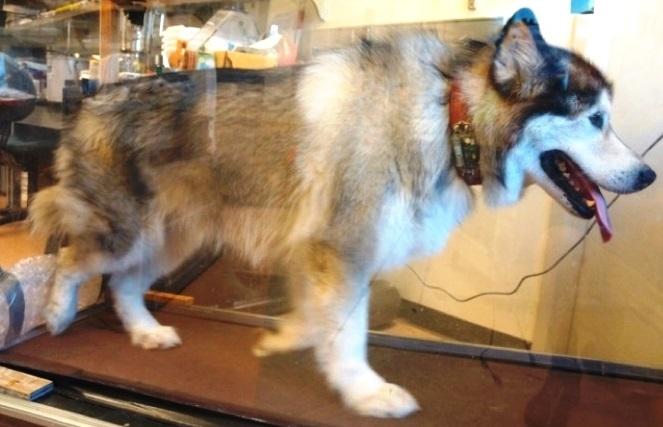Test results from mammals and birds emphasize risk reduction

Credit: Caleb Bryce from the Botswana Predator Conservation Trust
A dog’s gait, according to the American Kennel Club, is “the pattern of footsteps at various rates of speed, each distinguished by a particular rhythm and footfall.” When dogs trot, for example, the right front leg and the left hind leg move together. This is an intermediate gait, faster than walking but slower than running.
In the December 12, 2018 issue of the Proceedings of the Royal Society B, a multi-institutional team of researchers based at the University of Chicago Medicine take a novel and wide-ranging approach to understanding such speed-related gait transitions. The generally accepted approach has long focused on reducing locomotor costs, essentially finding the least taxing way to ramp up from one gait to a faster one without wasting energy.
The researchers, however, uncovered a different explanation. They chose to focus less on energy conservation and more on locomotor instability–in layman’s terms, reducing the risk of stumbling or toppling over. Their findings suggest that gait transitions represent “predictive, anticipatory switching of movements to minimize unstable dynamic states.”
“We found that gait transitions occur when the stability of a gait decreases so much that switching to a new gait improves stability,” said Michael Granatosky, PhD, lead author of the study and a post-doctoral student in the department of Organismal Biology and Anatomy at the University of Chicago. “The mammals and birds we studied tend to make gait transitions at critical points to provide a more rhythmic, less unstable locomotor state.”
These transitions, he added, can minimize “high inter-stride variation and unstable dynamic states, reducing the risk of inter-limb interference, such as tripping or falling.”
This wide-ranging study focused on gait transitions in nine animal models–seven mammals and two birds. The researchers started with Virginia opossums, tufted capuchins (“organ grinder” monkeys) and domestic dogs.
They subsequently found similar data on gait transitions in six additional species: American minks, Australian water rats, brush-tailed bettongs (small marsupials also known as rat kangaroos), ostriches, North American river otters and the Svalbard rock ptarmigan.
All of the initial animals–dogs, monkeys and opossums–were trained to exercise at a range of speeds on a treadmill within a plexiglass metabolic chamber. This familiarized the animals with the treadmills while improving their physical fitness. By the end of the training period, all of the animals could sustain six to ten minutes of vigorous running at “speeds required for metabolic movements.”
Once the training was completed, the researchers began testing. They monitored oxygen uptake, carbon-dioxide production, temperature, moisture levels, barometric pressure and air flow. Each animal ran in the chamber two to five times a day. From these metrics it was possible to determine the energetic costs of running at a particular speed.
These energetic costs were collected over a range of speeds during walking and running. Variations in stride cycle duration were collected for each speed interval.
Based on the data collected from this broad phylogenetic range of species, the authors determined that the assumptions of the energetic minimization hypothesis for gait transitions were rarely met.
Instead, most animals choose not to switch gaits when it was most energetically efficient. In this study, dogs, ptarmigans, ostriches and otters, showed no significant change in the energy cost of transport while switching from a walk to a faster mode. In contrast, almost all of the other species demonstrated high variability near gait transitions. They subsequently reduced variability after switching to a new more stable gait.
“Energy savings do not predict gait transition patterns,” the authors conclude. Instead, gait transitions “maintain dynamic stability across a range of speeds.”
“Our data,” the authors conclude, “suggest that gait transitions represent predictive, anticipatory switching of movement types to minimize high variability and avoid unstable dynamic states.” Birds and mammals, they added, appear to have evolved sensorimotor mechanisms for monitoring inter-stride stability during locomotion and for triggering gait transitions at critical levels of variation.
###
This study was funded by the National Science Foundation. Additional authors include Callum Ross, Myra Laird and Kelsey Stilson from the University of Chicago; Caleb Bryce from the Botswana Predator Conservation Trust; Jandy Hanna from the West Virginia School of Osteopathic Medicine; and Aidan Fitzsimons and Christine Wall from Duke University.
Media Contact
John Easton
[email protected]
773-322-7380
Related Journal Article
http://dx.




